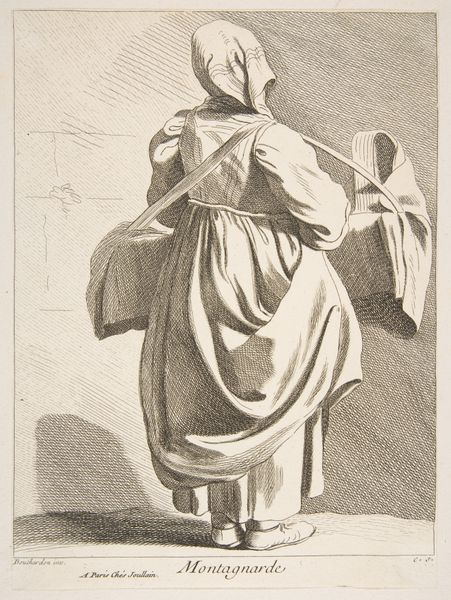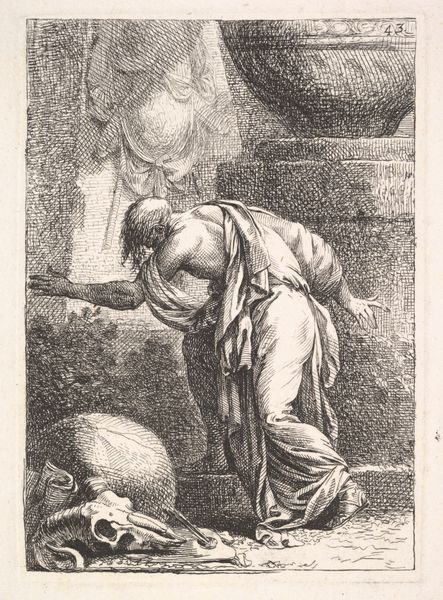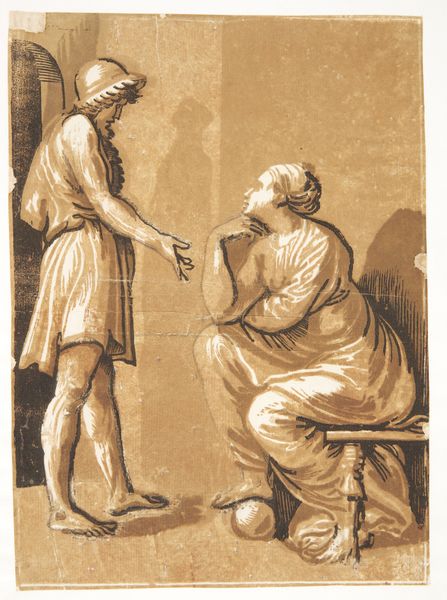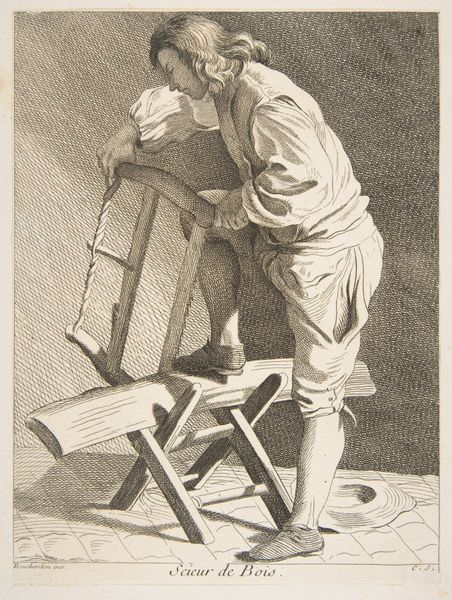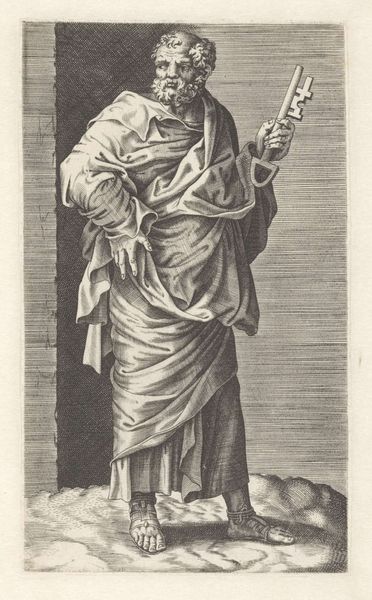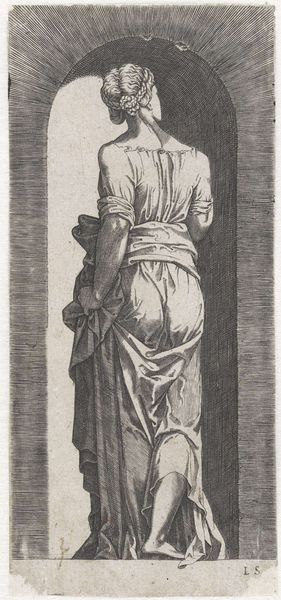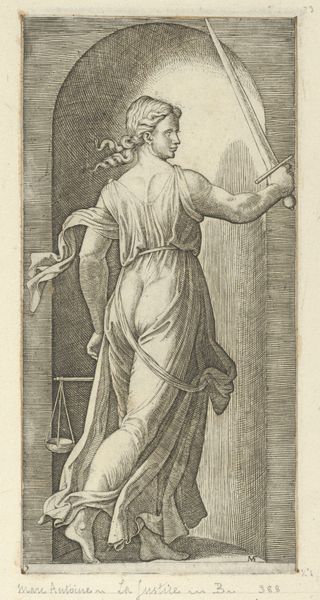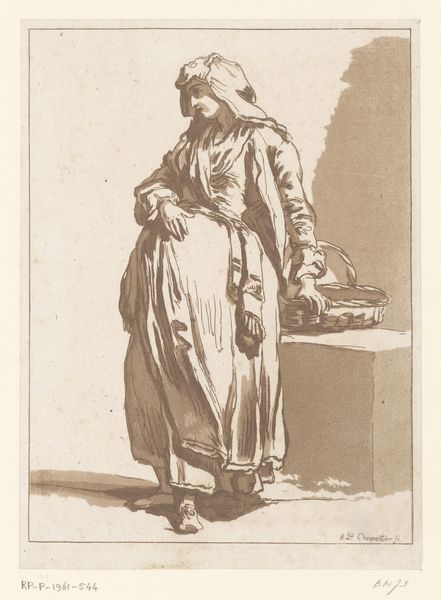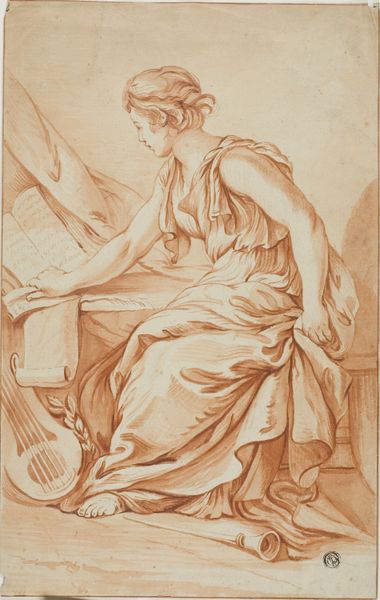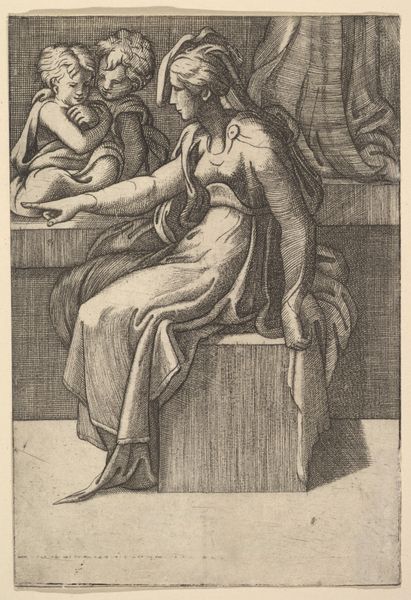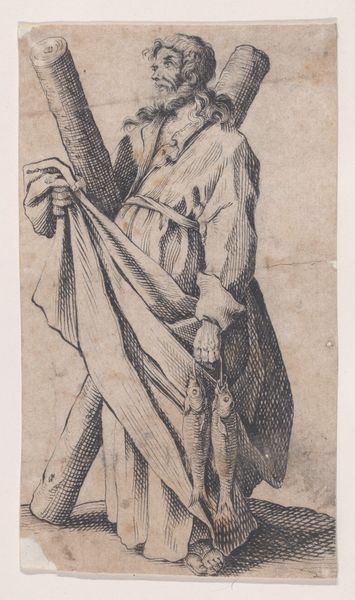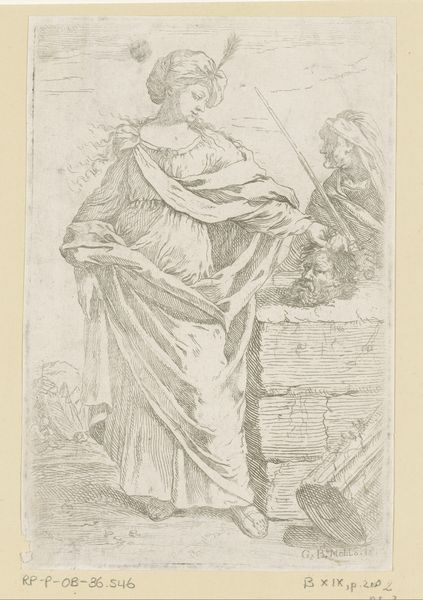
drawing, print, engraving
#
portrait
#
drawing
#
baroque
# print
#
genre-painting
#
engraving
Dimensions: Sheet: 9 3/16 x 6 5/8 in. (23.3 x 16.8 cm) Image: 8 13/16 x 6 9/16 in. (22.4 x 16.7 cm)
Copyright: Public Domain
This print, Baker Boy, was etched by Anne Claude Philippe Caylus in the 18th century using metal plate and acid. This was a period of industrial change, but printmaking remained a laborious, craft-based process. Look closely and you'll see the intricate network of lines that give the image its form. Each of these would have been carefully incised, bitten by acid, and then printed, one sheet at a time. This process allowed for multiples, and because of that, the image could circulate widely. The image itself speaks to labor. We see a young worker burdened with a heavy basket of bread. Consider the social context: the rise of cities, the demand for food, and the labor required to meet that demand. Caylus hasn't just made an image; he's captured a moment in the cycle of production, and a specific social class. By understanding the material and the making of this print, we can appreciate how it reflects the world around it. It bridges the gap between artistry and industry.
Comments
No comments
Be the first to comment and join the conversation on the ultimate creative platform.
